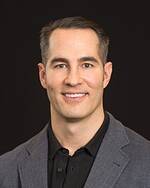
18 Apr Misuse of Prescription Stimulants Highly Variable Among US Schools
MedicalResearch.com Interview with:

Dr. Esteban McCabe
Sean Esteban McCabe, PhD
Director, Center for the Study of Drugs, Alcohol, Smoking and Health
Department of Health Behavior and Biological Sciences
University of Michigan School of Nursing
Ann Arbor, MI
MedicalResearch.com: What is the background for this study?
Response: Prescription stimulant therapy for ADHD helps millions of people, including in my own family, and students, friends and colleagues. It’s critical to balance the need for access to these medications while reducing the risk for misuse. This is more important than ever now because there have been recent increases in the prescribing of stimulant therapy for ADHD. There is a need to understand the prevalence of stimulant therapy for ADHD and prescription stimulant misuse in U.S. middle and high schools.
MedicalResearch.com: What are the main findings?
Response: We conducted the first nationally representative study and found a wide range of prescription stimulant therapy for ADHD and prescription stimulant misuse from none at some schools to well over 25% at other schools in the U.S. This indicated that in some US schools, more than 1 in 4 students report misusing prescription stimulants. This should be a major wake-up call. I can tell you that a student’s experience will be different at a school with no peers who misuse stimulants versus a school where 1 in 4 peers misuse stimulants. We also found a significant association between the number of people prescribed ADHD stimulant therapy in schools and prescription stimulant misuse. The implication here is not that we need to lessen prescribing of stimulants for students who need them, but that we need better ways to store, monitor, and screen for stimulant access and use among youth to prevent misuse.
MedicalResearch.com: What should readers take away from your report?
Response: The key takeaway is that individual schools must assess their own student bodies to understand whether prescription stimulant misuse or other substance misuse represent a problem at their schools and respond accordingly. The wide variation in stimulant misuse means individual schools should not solely rely on regional, state or national data collected elsewhere but assess their own students. Based on these school assessments, it’s important to implement personalized interventions that work best for each school. The response will vary for a school with no youth who misuse stimulants versus a school where 1 in 4 youth misuse stimulants,
A second key takeaway here is not that we need to lessen prescribing of stimulants for students who need them, but that we need better ways to store, monitor, and screen for stimulant access and use among youth to prevent misuse. It’s also critical to treat and educate teens on prescription stimulants as the medications they are intended to be and limit their availability as drugs of misuse.
MedicalResearch.com: What recommendations do you have for future research as a results of this study?
Response: There have been major changes to U.S. schools and many have not fully rebounded since the onset of COVID-19. Now is an ideal time to better understand our schools and how to keep students safe. Future research needs to assess what risk reduction strategies are most effective at the school level to allow safe access to these medications for students who need them while reducing the risk for misuse. More importantly, we have seen the largest increases in stimulant therapy among adults and women and many of the teens leave home and assume more responsibility for their own medication management. Future research needs to study the associations among stimulant therapy and stimulant misuse during the transition from adolescence to young adulthood.
MedicalResearch.com: Is there anything else you would like to add? Any disclosures?
Response: I want to stress that parents can take steps to prevent medication sharing:
* In middle school, start talking to kids about managing their medications
* Role play so kids know how to respond if asked to share medications
* Always store controlled substances in a lockbox and monitor pill counts
* Make sure schools have safe storage and dispensing policies, and ask about prevalence of misuse
* Contact prescriber immediately if you detect misuse
Citation:
McCabe SE, Schulenberg JE, Wilens TE, Schepis TS, McCabe VV, Veliz PT. Prescription Stimulant Medical and Nonmedical Use Among US Secondary School Students, 2005 to 2020. JAMA Netw Open. 2023;6(4):e238707. doi:10.1001/jamanetworkopen.2023.8707
https://jamanetwork.com/journals/jamanetworkopen/fullarticle/2803941
The information on MedicalResearch.com is provided for educational purposes only, and is in no way intended to diagnose, cure, or treat any medical or other condition. Always seek the advice of your physician or other qualified health and ask your doctor any questions you may have regarding a medical condition. In addition to all other limitations and disclaimers in this agreement, service provider and its third party providers disclaim any liability or loss in connection with the content provided on this website.
Last Updated on April 18, 2023 by Marie Benz
